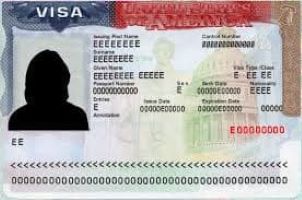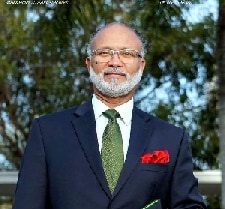What to Know About the H1B Visa


There are different paths to come to the U.S., and if you’re a technical or highly skilled worker, one such path might be the H1B visa.
You could have already started preparing for the H1B application process by learning or practicing your English and searching for an employer, but beyond that, the following are some of the key things to know.
The Basics
The H1B visa is a temporary visa for skilled workers. It allows them to both live and work in the U.S. for a period of time. It’s considered a non-immigrant visa since you can only live in America for the time outlined in the visa.
The H1B program is designed to help U.S. companies find graduate-level workers in certain occupations that require technical expertise. The fields that are often included in the H1B program include IT, engineering, medicine, math, and science.
While these industries are the most frequently targeted, any professional-level position that requires a bachelor’s degree or higher could allow someone to come to the U.S. under the H1B program.
If you don’t have at least a bachelor’s degree, you might still be eligible, but you’d have to show equivalent work experience or some other exceptional skills.
The process to apply for a non-immigrant visa tends to go faster than applying for a Green Card, so employees do like it to bring in long-term staff.
There are a very limited number of these visas, though.
There is a visa cap, which means it’s incredibly competitive. U.S. employers petition for the H1B visa.
What is the H1B Visa Cap?
Each financial year, there is an annual cap on visas.
An employer can start to apply six months before the start date.
The current law allows for 85,000 total new visas of this type to be available each fiscal year, although that could change.
There is a limit of 65,000 visas for overseas workers with at least a bachelor’s degree, and then there are 20,000 visas for workers that have an advanced degree from an institution in the U.S.
Eligibility
The first broad category of eligibility for the H1B visa is the specialty occupation.
The job that someone would be coming to the U.S. for has to meet certain criteria to be designated as a specialty occupation.
It needs a minimum of a bachelor’s degree for entry or higher.
The degree requirement for the position has to be so unique that only someone with that credential can do the job, and the employer would have to normally require a similar degree to fill the position, even outside of the H1B process.
Employee qualifications include either having completed your bachelor’s or higher-level degree in the U.S., or you should have a degree from a foreign institution that’s the equivalent.
You would need deep expertise and knowledge in the field, and the employer has to show that there is a lack of qualified talent in the U.S. to fill the position.
According to the United States Citizenship and Immigration Services, a specialty occupation is one in which the specific duties are so complex and specialized that the ability to do them is associated with having a bachelor’s degree at a minimum, as was touched on.
The H1B Visa Process
The first step of the H1B visa process is to find a sponsor. You can’t use this visa to just come to the U.S. and then find employment once you’re here. Instead, a company needs to be hiring and willing to then go through the process to sponsor you.
When you’re looking for a job in the U.S., make sure potential employers know that you’re seeking sponsorship. Many employers will advertise that they’re looking to hire H1B visa workers.
The employer will have to extend an offer of employment to you, and they can then start the actual application process.
The first step of the application process for the employer is to submit what’s called a Labor Conditions Approval (LCA) to the Department of Labor. An employer can do this online.
In this form, the employer is letting the government know they’ll pay at least an equal wage to what the rate is in the area where the work will be done. The employer will also commit to safe working conditions for the employee.
Then, the next step in the process is the submission of the form I-129 by the employer.
That happens once the LCA is actually approved. Form I-129 is the Petition for a Nonimmigrant Worker.
The employer has to include things like the education required for the position, and they’ll include experience documents and evaluation information. It can take around four months for this petition to be processed.
Once the petition submitted by the employer is approved, then the applicant processes their visa at the US embassy or consulate in their home country, which usually takes a few days.
What is the Lottery?
There is something called the H1B visa lottery, which is a random, computer-generated selection process. This is meant to be a fairer way to deal with the high number of H1B applications received each year.
When there are more applications than there are spots, the lottery system is used.
Reasons for Denials
There are certain common reasons that a petition for an H1B visa is likely to be denied.
Probably the biggest reason is that a position doesn’t meet the specialty occupation requirements.
There’s also a concept called “right to control.” This means that an employer has to have certain guidelines in place when an employee is going to go to a third-party place to work.
A third reason for denial is what’s called a level 1 wage. This means that the DOL might see a position as entry-level based on the wage.
If you are denied for the H1B, you might try for another option such as the L1 visa or the TN visa if you’re a citizen of Canada or Mexico. There’s also the E3 for Australian citizens.


